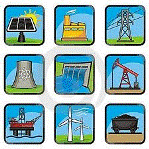Department of Agricultural Economics: Undergraduate Research
Date of this Version
Fall 12-18-2018
Document Type
Article
Citation
Op-Ed from ENSC 230. Energy and the Environment: Economics and Policy, University of Nebraska-Lincoln, Department of Agricultural Economics, Fall 2018
Abstract
Progress is why we change, and innovation drives that progress. It is already very clear to scientists around the globe that our current framework for living is not sustainable. 97 percent of climate scientists are in consensus that there is a major threat to our ecosystem and action needs to be taken. Overpopulation, pollution, water scarcity, natural disasters, overfishing, deforestation are all issues that must be reevaluated with sustainability in mind. However only 49 percent of the general population share this belief, and even less, only 29 percent of CEOs are actively addressing climate change. The shortcoming for the general population is simply all of the misinformation available at the click of a button. On the other hand, the major lapse in understanding between scientists and CEOs needs to be addressed.
I believe this is simply due to a lack of a universal language in which both parties can use to communicate. Ecologists will continue to care about the Earth and corporations will continue to care about profit. We can’t blame them for thriving in a free market. However, there must be a common ground in which we can get them to understand the impacts of frivolous resource extraction and endless pollution dumping into the atmosphere.
The quickest way to understanding, in my opinion, is putting it in the terms of cold hard cash. Maybe if we add an actual dollar value to the things we are destroying, we might be more inclined to be more responsible with those resources. According to a study done by economist Robert Costanza in 1990; Globally, ecosystems and the services they provide equal roughly $33 trillion. Adjust that for inflation and it comes out to approximately $62 trillion, and these are just the positives. Imagine if we invested the time into calculating the future costs of dumping tons of carbon dioxide into the atmosphere. Maybe then we would see real change from corporations, governments, and those with the power to make those changes.
There is no guarantee that these figures will sway company decisions in any way. However, without communication, there can be no progress and creating common ground creates an avenue in which this communication can occur. In 2009 a major step in the right direction was made when the US government created a formal measure of the value of reducing carbon pollution. This is being referred to as the social cost of carbon. According to the ‘Technical Update of the Social Cost of Carbon for Regulatory Impact Analysis’ of 2016, by 2020 the social cost of carbon emitted into the atmosphere is projected to reach $42 per ton. At 9 billion tons of carbon emissions in 2014, that equals approximately $378 billion per year, and that number will only continue to rise.
I think about the issue of inaction a lot. A quote from the movie “Interstellar” always seems to come to mind as to why we continue to sit back and do nothing. “Evolution has yet to transcend that simple barrier. We can care deeply - selflessly - about those we know, but that empathy rarely extends beyond our line of sight.” We see this behavior in today’s society quite frequently. People continue to consume and pollute with little to no regard for the well-being of future generations. It's time to change that notion, if not for us, then for the betterment of our children and our children’s children. It’s time to evolve.
Included in
Environmental Indicators and Impact Assessment Commons, Natural Resources and Conservation Commons, Oil, Gas, and Energy Commons, Other Environmental Sciences Commons

